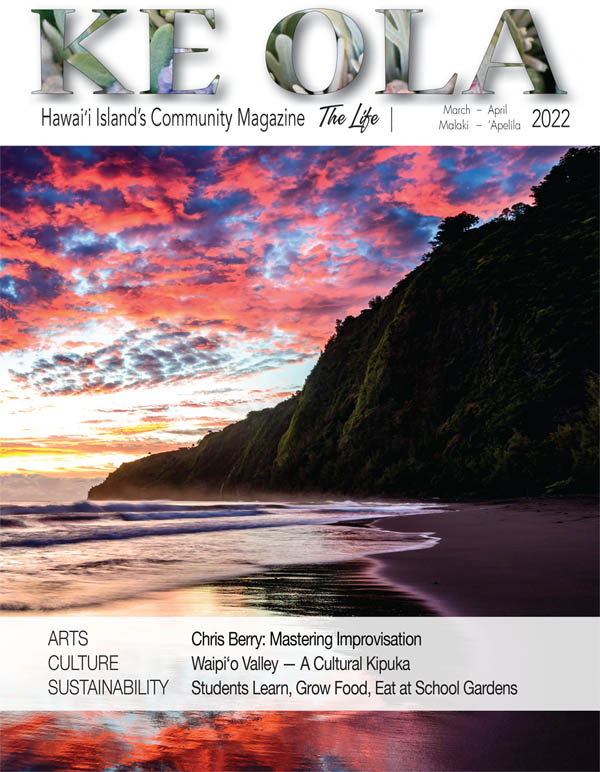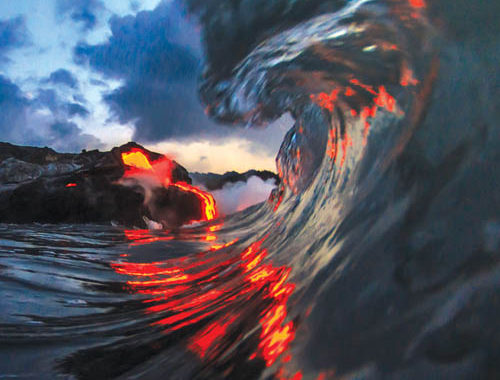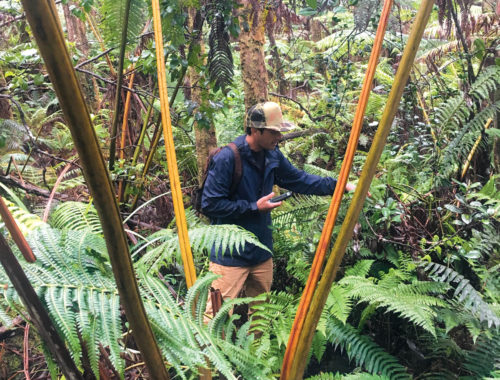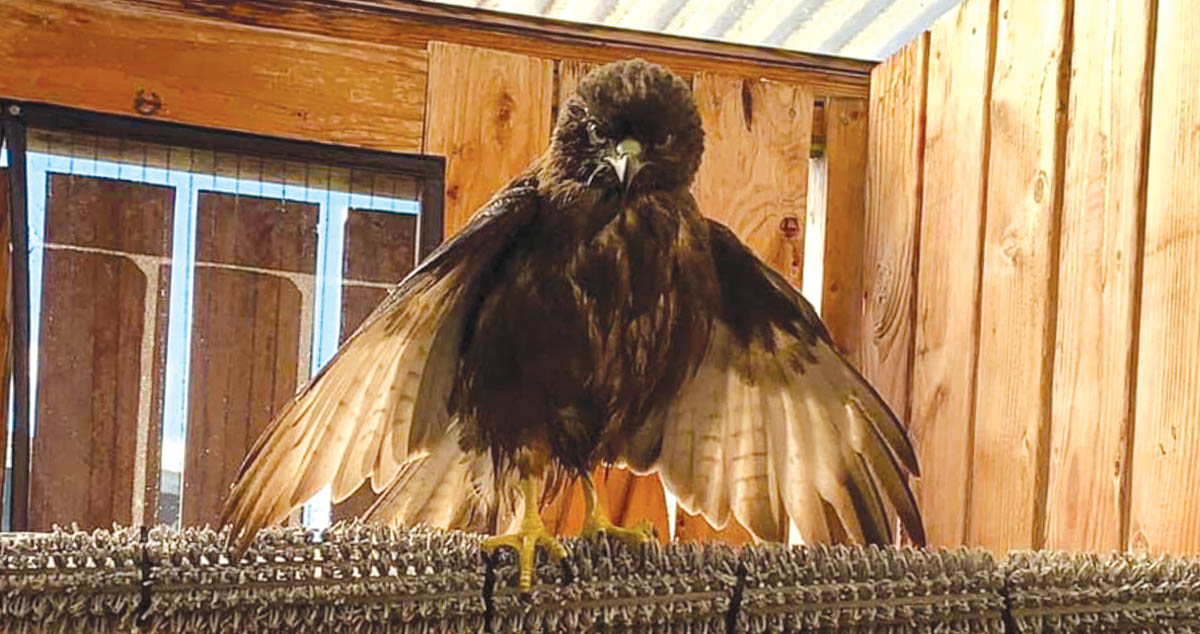
Mālama Mokupuni: Caring for Our Island Environment—Take These Broken Wings…
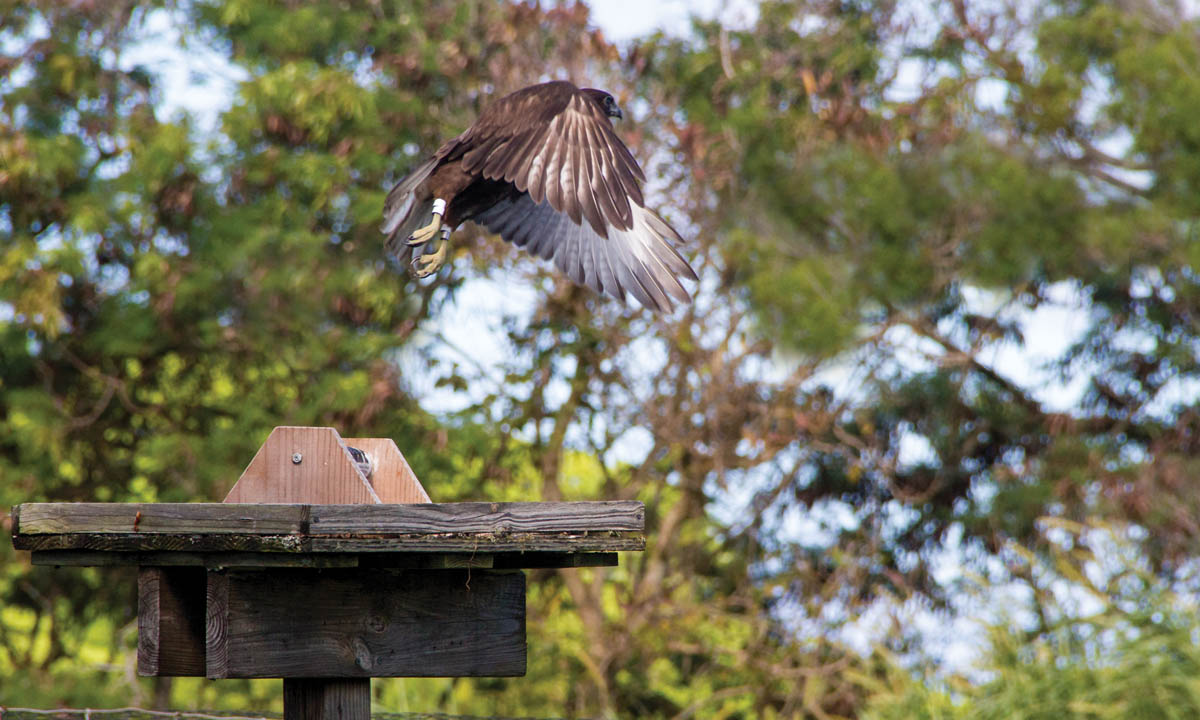
By Rachel Laderman
The Hawai‘i Wildlife Center (HWC) is Hawai‘i’s only comprehensive facility for rehabilitating native winged creatures. Linda Elliott, the founder, president, and director, says, “Here we are, the extinction capital of the world. Our state has the majority of the endangered species in the US—around 25%! We built HWC to give injured Hawaiian birds and bats a second chance.” HWC is celebrating its 10th anniversary this year, and has thousands of reasons to be proud.
Since November 2011, HWC has provided medical care to 2,536 winged patients representing more than 40 species and subspecies of native birds and one bat. From their base in Kohala, plus statewide partners and satellite operations on O‘ahu and Lana‘i, HWC serves the entire Hawaiian archipelago. The staff provides emergency response, rehabilitation, and release, as well as research, training, and education.
In its first few years, the nonprofit HWC and partner programs saw 20–30 cases per year. This quickly grew to 20–30 at a time, and more than 800 patients per year. Ironically, part of the rising case load is due to successful conservation measures. Some of Hawai‘i’s threatened and endangered endemic birds have made a comeback in recent years, but learning to coexist with them in urban settings has brought unique challenges.
Rae Okawa, HWC’s development coordinator, explains that most of the injuries are from human impacts, whether that’s from a run-in with a car, impact with buildings, entanglement in barbed-wire fencing, or from fallout due to bright lights. “When seabirds fledge, they head out to follow the light of the moon, but if they see other bright lights, they become disoriented and circle these lights until they fall out of the sky from exhaustion,” Rae explains. “Around 75% of the cases we see are related to seabird fallout.”
Injured birds from throughout the main Hawaiian Islands are flown to HWC’s two-acre headquarters in Kapa‘au. The state-of-the-art facility includes an oil-spill wash room, an isolation room, and predator-proof, specifically designed rehabilitation and flight training areas for the five types of fliers: seabirds, forest birds, birds of prey, water birds, and the Hawaiian hoary bat. There is also a retail shop and educational exhibit center. (Sales from the shop directly support the HWC’s operations.)
HWC has many successful rescue stories involving heroic efforts, skill, and perseverance, but this one concerning the threatened ‘io, Hawai‘i’s only hawk, carries extra poignancy.

Response, Rehabilitation, Release—and Return
In June 2020, an orphaned young ‘io was brought to HWC. The bird was uninjured but too young to survive on his own. He started out in the hospital and was gradually introduced to the raptor aviary, where he grew up and learned to fly.
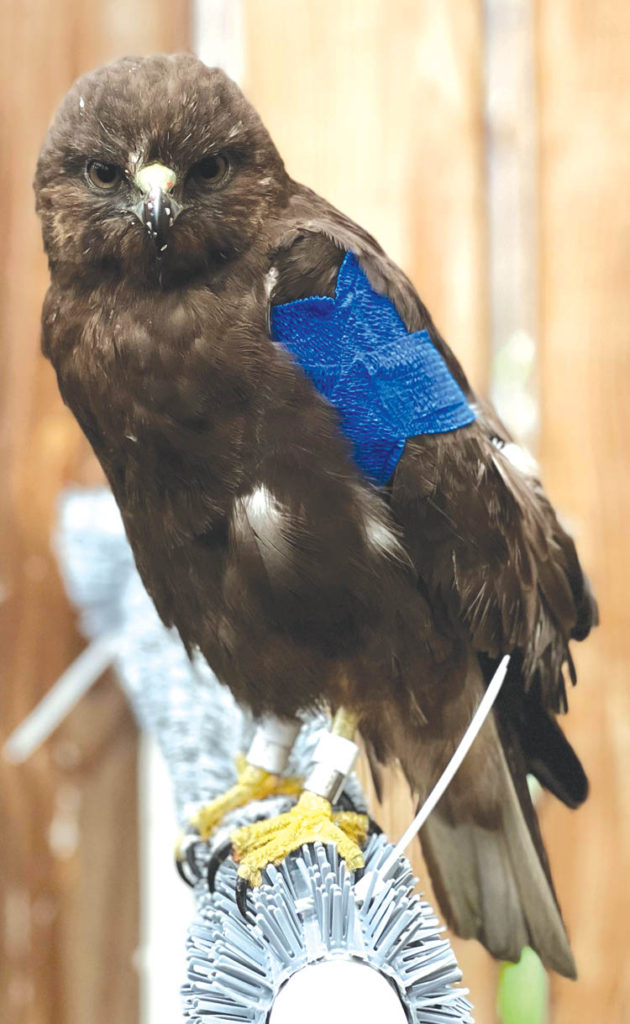
By December, he was mature enough to be ready for release, but still needed to learn how to live and hunt in the wild. The HWC provided a soft release: he was free, but had the support of food provided on what is called a “hacking platform.” After an hour he finally flew off into the forest. Over the next months, staff occasionally spotted him in a nearby tree. He was living successfully and independently.
Later in 2021, this ‘io again was brought to HWC. One wing was shattered by a pellet gun. “He was doing well being a wild hawk and hunting. Now he can never be released in the wild,” says Rae.
Pellet gun injuries in ‘io are a disturbing trend on Hawai‘i Island. Harming an ‘io is against the law. The Hawaiian Islands are the ‘io’s sole home in the world; they only breed on Hawai‘i Island. There have been reports that chicken owners may be shooting ‘io, thinking they are protecting their flock. Like many other species, ‘io are opportunistic. “The easiest meal is the best meal,” says Rae. Rather than shooting the birds, farmers can discourage ‘io by protecting their chicks in a coop and providing nearby shelter. The ‘io will find something easier to eat, such as rats, lizards, even centipedes!
Kōkua Dos and Don’ts
- Turn off unnecessary lights and shield bright outdoor lights so they illuminate the ground, not the sky.
- Use wildlife-friendly rodent bait, to avoid poisoning hawks and owls; slow, poisoned rodents make easy prey.
- To report a bird in need, call Bird and Bat Helpline: 808.884.5000
- For more information, to donate, or volunteer: hawaiiwildlifecenter.org
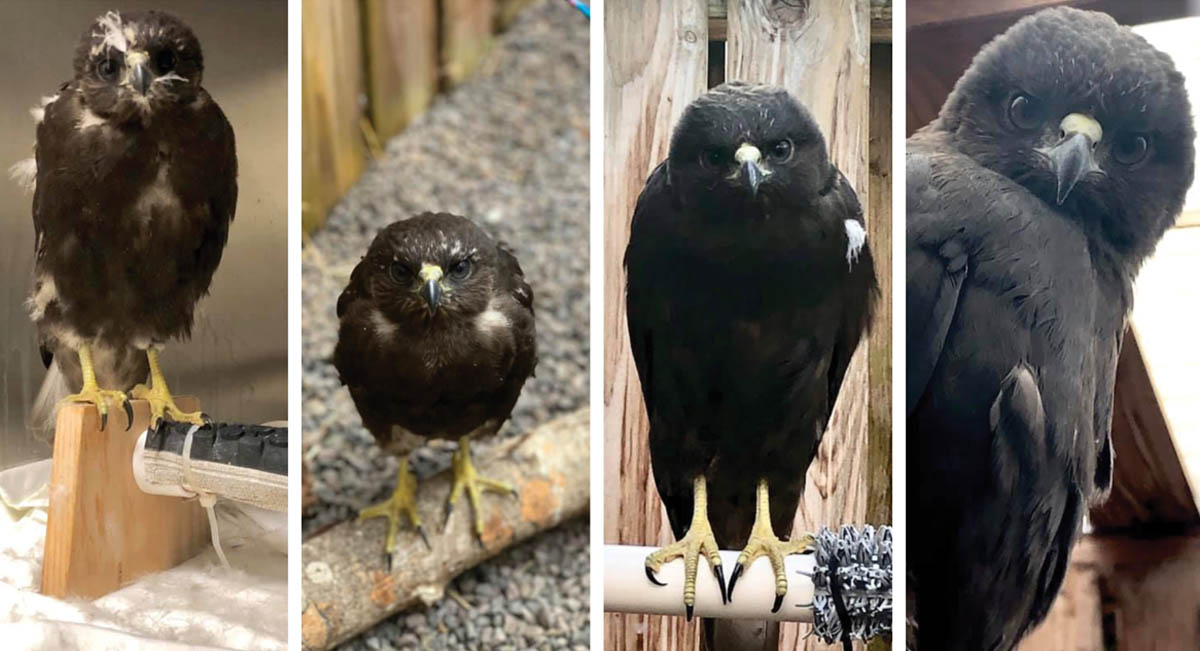
All photos courtesy of Hawai‘i Wildlife Center
Rachel Laderman, Sustainable Pacific Program
Lynker LLC/NOAA Affiliate, Hawaii Island
